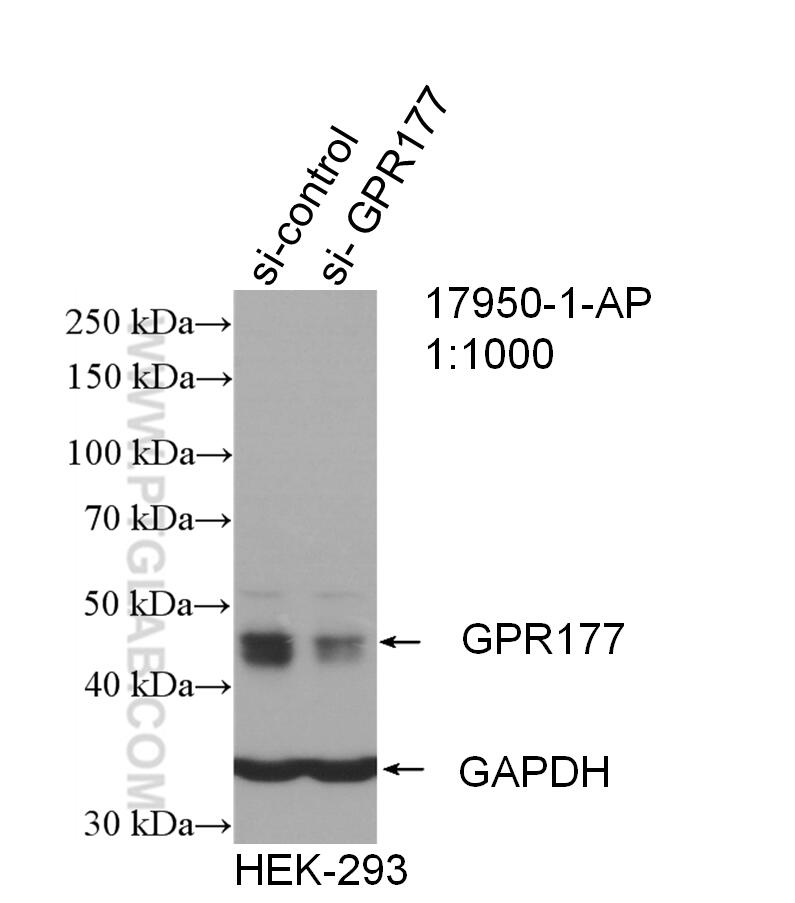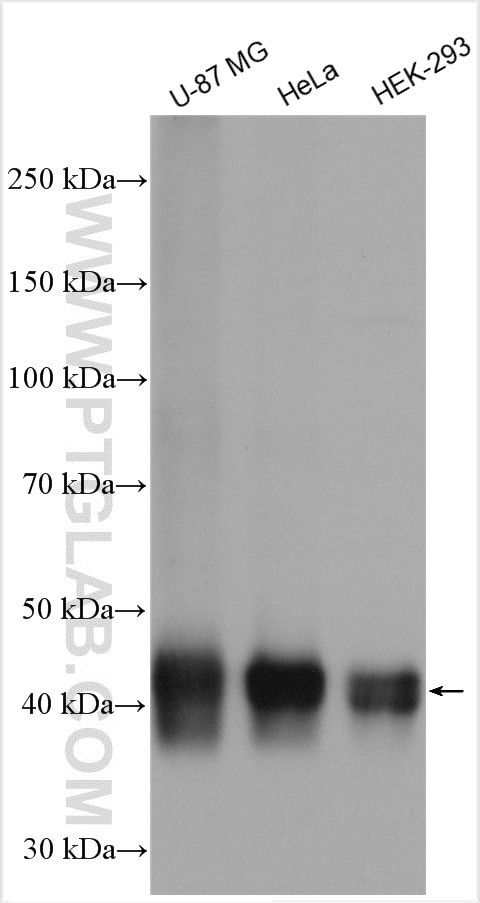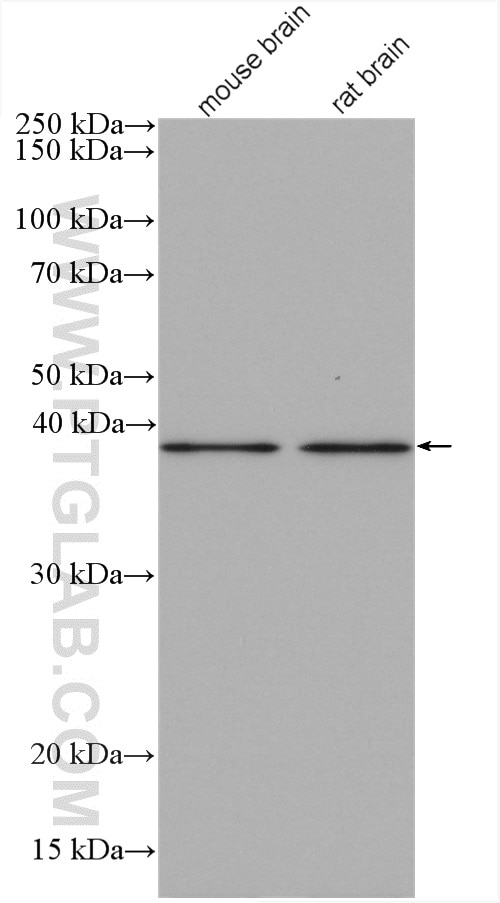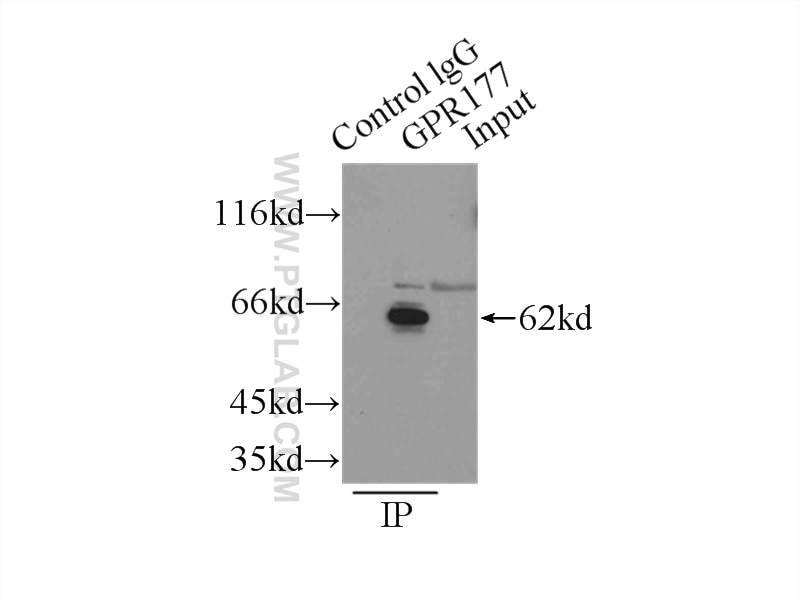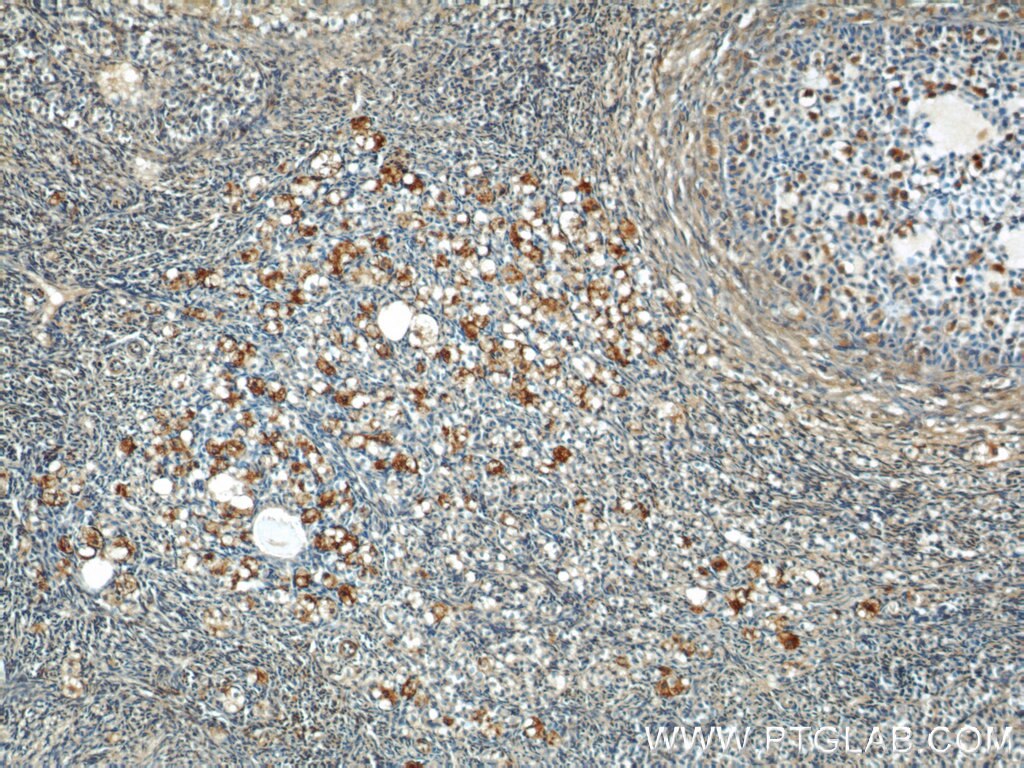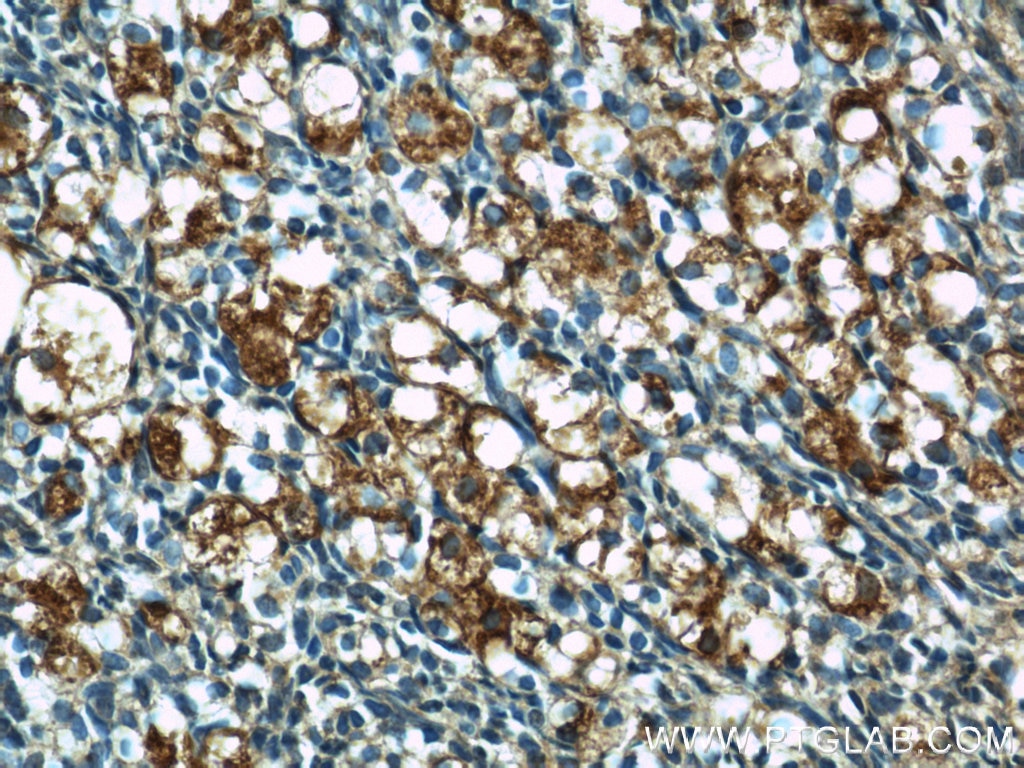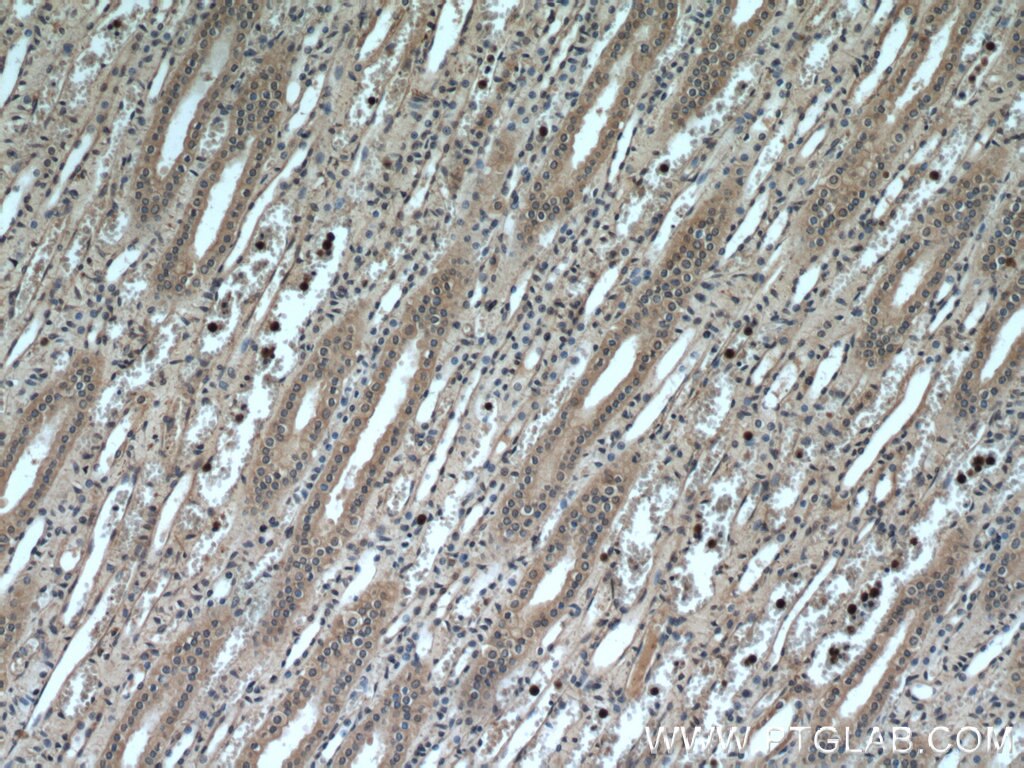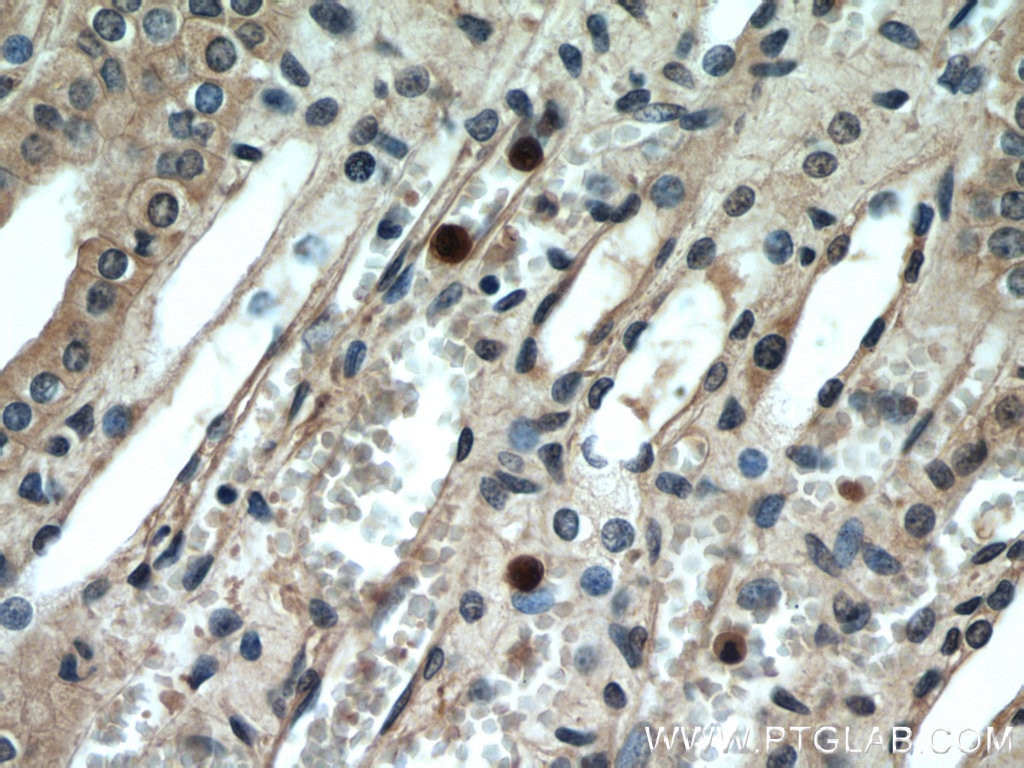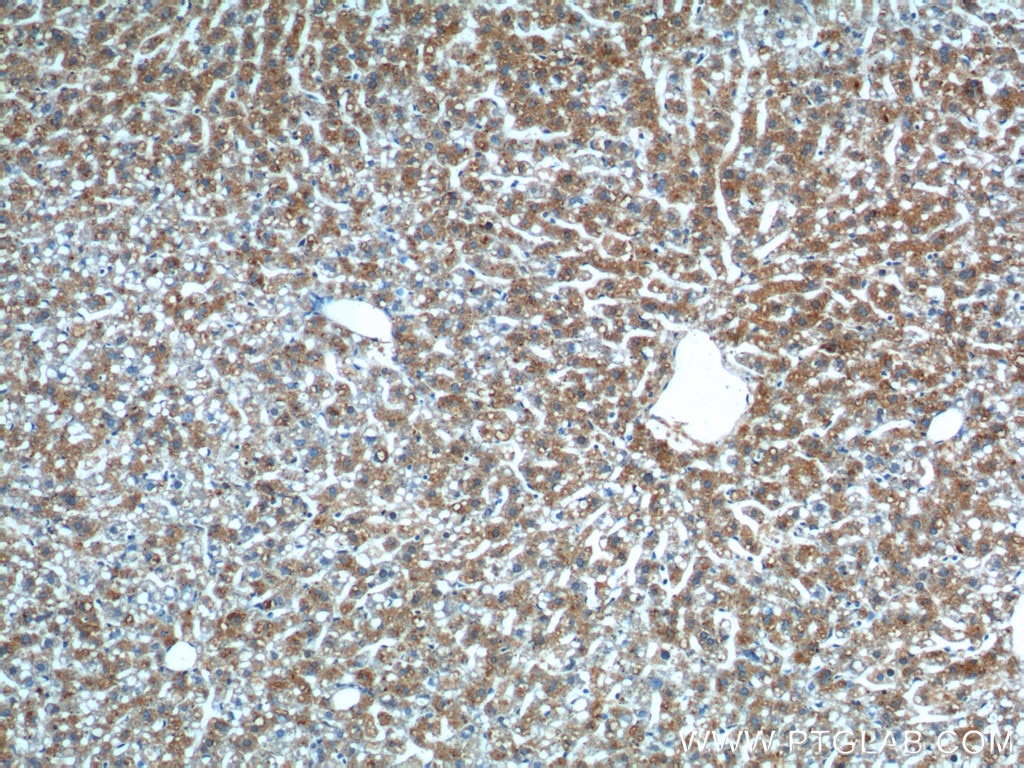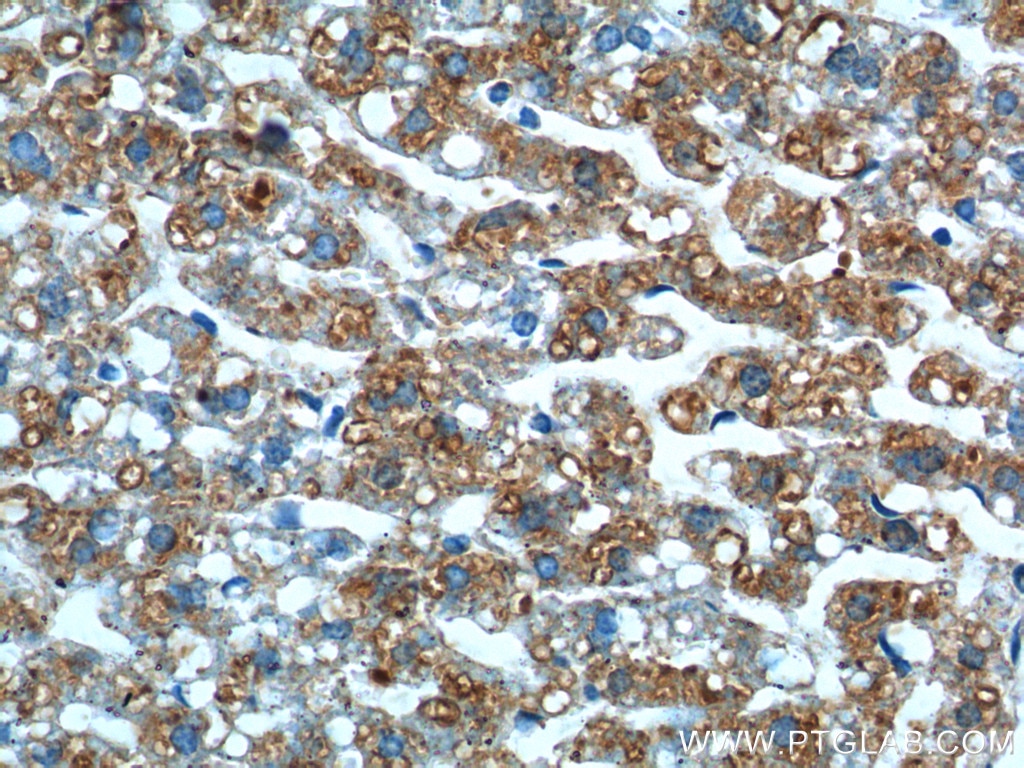- Featured Product
- KD/KO Validated
GPR177 Polyklonaler Antikörper
GPR177 Polyklonal Antikörper für WB, IP, IHC, ELISA
Wirt / Isotyp
Kaninchen / IgG
Getestete Reaktivität
human, Maus, Ratte und mehr (1)
Anwendung
WB, IP, IHC, ELISA
Konjugation
Unkonjugiert
Kat-Nr. : 17950-1-AP
Synonyme
Geprüfte Anwendungen
| Erfolgreiche Detektion in WB | U-87 MG-Zellen, HEK-293-Zellen, Maushirngewebe, Rattenhirngewebe |
| Erfolgreiche IP | Mauslebergewebe |
| Erfolgreiche Detektion in IHC | humanes Eierstockgewebe, humanes Nierengewebe, Mauslebergewebe Hinweis: Antigendemaskierung mit TE-Puffer pH 9,0 empfohlen. (*) Wahlweise kann die Antigendemaskierung auch mit Citratpuffer pH 6,0 erfolgen. |
Empfohlene Verdünnung
| Anwendung | Verdünnung |
|---|---|
| Western Blot (WB) | WB : 1:1000-1:5000 |
| Immunpräzipitation (IP) | IP : 0.5-4.0 ug for 1.0-3.0 mg of total protein lysate |
| Immunhistochemie (IHC) | IHC : 1:50-1:500 |
| It is recommended that this reagent should be titrated in each testing system to obtain optimal results. | |
| Sample-dependent, check data in validation data gallery | |
Veröffentlichte Anwendungen
| WB | See 6 publications below |
| IHC | See 4 publications below |
Produktinformation
17950-1-AP bindet in WB, IP, IHC, ELISA GPR177 und zeigt Reaktivität mit human, Maus, Ratten
| Getestete Reaktivität | human, Maus, Ratte |
| In Publikationen genannte Reaktivität | human, Maus, Ratte, Ziege |
| Wirt / Isotyp | Kaninchen / IgG |
| Klonalität | Polyklonal |
| Typ | Antikörper |
| Immunogen | GPR177 fusion protein Ag12428 |
| Vollständiger Name | G protein-coupled receptor 177 |
| Berechnetes Molekulargewicht | 541 aa, 62 kDa |
| Beobachtetes Molekulargewicht | 46-65 kDa |
| GenBank-Zugangsnummer | BC110826 |
| Gene symbol | GPR177 |
| Gene ID (NCBI) | 79971 |
| Konjugation | Unkonjugiert |
| Form | Liquid |
| Reinigungsmethode | Antigen-Affinitätsreinigung |
| Lagerungspuffer | PBS with 0.02% sodium azide and 50% glycerol |
| Lagerungsbedingungen | Bei -20°C lagern. Nach dem Versand ein Jahr lang stabil Aliquotieren ist bei -20oC Lagerung nicht notwendig. 20ul Größen enthalten 0,1% BSA. |
Hintergrundinformationen
GPR177, also known as Wntless (WLS) or Evi, is an evolutionarily conserved transmembrane protein necessary for Wnt protein secretion. GPR177 localizes to compartments of the secretory pathway, including the ER, Golgi apparatus, endosomes, and plasma membrane. GPR177 is overexpressed in several cancer types including glioma and gastric cancer. Several isoforms of GPR177 exist due to the alternative splicing, with predicted MW around 62 and 51 kDa, respectively. The sequence can be processed by removing the signal peptide, which generates a mature form of 45-46 kDa. In addition, slow migragrating band above 62 kDa can also be detected because GPR177 is modified by N-linked glycosylation (PMID: 20549736).
Protokolle
| PRODUKTSPEZIFISCHE PROTOKOLLE | |
|---|---|
| WB protocol for GPR177 antibody 17950-1-AP | Protokoll herunterladen |
| IHC protocol for GPR177 antibody 17950-1-AP | Protokoll herunterladenl |
| IP protocol for GPR177 antibody 17950-1-AP | Protokoll herunterladen |
| STANDARD-PROTOKOLLE | |
|---|---|
| Klicken Sie hier, um unsere Standardprotokolle anzuzeigen |
Publikationen
| Species | Application | Title |
|---|---|---|
Cell Res Comprehensive profiling reveals mechanisms of SOX2-mediated cell fate specification in human ESCs and NPCs. | ||
Front Physiol A Longitudinal Study of T2 Mapping Combined With Diffusion Tensor Imaging to Quantitatively Evaluate Tissue Repair of Rat Skeletal Muscle After Frostbite. | ||
Onco Targets Ther Wntless (Wls): A Prognostic Index for Progression and Patient Survival of Breast Cancer. | ||
Int Ophthalmol The effect of Wnt/β-catenin pathway on the scleral remolding in the mouse during form deprivation. | ||
Cells Integrative Analysis of Methylome and Transcriptome Reveals the Regulatory Mechanisms of Hair Follicle Morphogenesis in Cashmere Goat. |
